De no haber leído el libro quizás encuentres algunos datos que puedan considerarse spoiler, tener precaución al momento de leer.
If you have not read the book, you may find some information that could be considered spoilers, so be careful when reading.
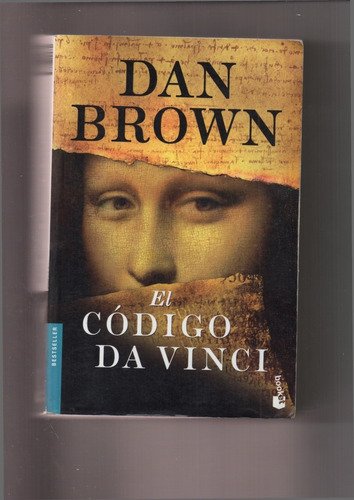

Ficha técnica / Technical data
Fecha de publicación: 29/08/2017
Idioma: Español
ISBN: 978-84-08-17572-8
Código: 10190069
Formato: 12,5 x 19 cm.
Presentación: Rústica sin solapas
Colección: Biblioteca Dan Brown
Traductores: Claudia Conde Fisas
Sentido de lectura: Occidental.
Link.
Date of publication: 08/29/2017
Language: Spanish
ISBN: 978-84-08-17572-8
Code: 10190069
Format: 12,5 x 19 cm.
Presentation: Paperback without flaps
Collection: Dan Brown Library
Translators: Claudia Conde Fisas
Reading sense: Western.
Link.


En el año 1244, en el sur de Francia, siglo 13, los Cataros fueron exterminados por el ejército francés y por mandato de la iglesia. Son condenados por herejía. Su fe los hace mártires por guardar un secreto que podía poner en peligro a la misma iglesia.
El secreto bien guardado es el argumento de la novela El Código Da Vinci del escritor Daw brown. El libro es estructurado bajo una realidad histórica con hechos ficticios que le dan forma al best seller.
Para entender la novela se debe analizar los momentos históricos que acontecen en el marco de la misma.
1-La relación de maría magdalena con Jesús de Nazaret.
2-La vida de maría magdalena.
3-La leyenda del santo grial.
4-La obra de la última cena de Leonardo da vinci.
5-Los cruzados.
6-El priorato de sion.
7-Opus dei.
Argumentos usados en la novela.
1-La hija de maría magdalena Sara y su viaje desde Egipto al sur de Francia. Sara en hebreo significa princesa.
2-La descendencia de Sara y los reyes merovingios.
3-La protección de la descendencia de Sara por el Priorato de Sion, luego de la muerte y mandato de los reyes merovingios. El verdadero Priorato de Sion nació en el año 1099.
4-Los templarios aparecen en la escena para proteger a la línea de sucesión de Jesús y aria magdalena.
5-El Priorato de sion encomienda a los templarios buscar en la tumba del rey Salomón la genealogía de la descendencia de Sara.
6-Con tales documentos, los templarios chantajean a la iglesia.
7-El 13 de octubre de 1307, El rey Felipe cuarto de Francia ordena el exterminio de los templarios.
8-Algunos templarios escaparon llevándose condigo los documentos encontrados, y entregándolos al Priorato de sion.
9-La iglesia inicia la mayor búsqueda conocida hasta entonces, convirtiéndose esta en la leyenda del Santo Grial.
10-Los documentos fueron pasando de maestro en maestro hasta llegar a Leonardo da Vinci.
Las teorías:
La novela sugiere, que el santo Grial no es una copa, no es oro, ni un objeto en particular, si no, de la sangre de cristo en el vientre de una mujer, María Magdalena. Es pues el asunto insinuado por Leonardo da Vinci en la obra pictórica de la última cena, en el aparte donde se deja ver a un supuesto juan al lado derecho de Jesús, que en realidad Leonardo lo pinto como una mujer, María Magdalena.
Se cree que María Magdalena llego al sur de Francia, luego de dar luz en Egipto a su hija Sara. Llego acompañada de José de Alimatea, María Jacobea hermana de María madre de Jesús y María Salome madre de dos de los apóstoles, Santiago el mayor.
También se cree, según la leyenda anglosajona, que llego a Inglaterra, a la abadía de Glestonbury, cuyo lugar posteriormente se convertiría en una majestuosa iglesia, siglo XII.
Según el código da vinci, en el concilio de Nicea, año 325 después de cristo, el emperador de Roma Constantino, decide erradicar el culto a María Magdalena y fueron condenados los gnósticos. Nace la nueva historia cristiana oficial contada por un libro llamado la biblia.
Los merovingios fueron reyes muy singulares, ya que podían curar con las manos y hablar con los animales, eran parte de la sucesión de maría magdalena.
Fueron los cruzados cuando sitiaron a Jerusalén, al mando del rey Godofredo Buyón, del linaje de los merovingios. Quienes encuentran documentos relacionados con la descendencia de Jesús y María Magdalena.
Al siguiente año Godofredo Buyón crea un grupo de culto secreto en el monte sion llamado el Priorato de sion. Más tarde allí, unos monjes crean una abadía y una orden de Sion.
Durante los siglos doce y trece, surgieron comunidades al sur de Francia que eran herejes, llamadas los cataros. Las leyendas dicen que son custodio de un gran tesoro. Se revelaban a la iglesia por esta esta dejaba ver una vida de papas envueltas de riqueza y lujos. Entonces en el 1209 la gran cruzada albigense de la iglesia acabo con los cataros y dio el inicio al movimiento de la santa inquisición.
Luego de 40 años, en el 1244, hubo una última batalla en la montaña de Monsieur. Los cruzados albigenses ganaron la batalla, pero unos cuatro monjes escaparon por un costado de la montaña, llevando consigo algunos documentos importantes, el misterioso tesoro cátaro.
El dossier de documentos fue encontrado de manera increíble, por el periódico De Especie Di Mide, en la biblioteca nacional de Paris, en el año 1956. Los documentos fueron depositados en la biblioteca por un grupo que se hizo llamar el priorato de Sion, en ese mismo año. El representante de aquel grupo se llamaba Pierre Plantard. El dossier contenía un listado de nombres correspondientes a un árbol genealógico.
Según la novela
En el siglo 19, al sur de Francia, en Rennes le Cháteau en los pirineos. El padre Jacques Souniére capellán del pueblo y homónimo del conservador del Louvre. Inicia la restauración de su iglesia. Este suceso da inicio a la historia de la novela. Jacques Souniére, hizo reparaciones extrañas a la estructura de la iglesia. Haciendo modificaciones heréticas y Construyendo una torre dedicada a María Magdalena.
Al demoler un pilar visigodo en uno de los corredores de la iglesia, son encontrados unas vitelas antiguas que reescriben la historia cristiana contada hasta ese momento, llamados el dossier secreto.
La novela nos señala que existen otros documentos donde se indican la línea sucesora desde Jesús. La novela nos indica que la misión del Priorato de Sion es encontrar dichos documentos.
El relato nos dice que luego de los sucesos con los cataros en el 1244, los documentos debieron ser llevados tal vez a la iglesia del temple de Londres. Los documentos pasan una sola noche en este lugar, para luego ser trasladados al norte, Escocia.
En las afueras de Edimburgo, la capilla Rosslyn construida supuesta por los templarios en el 1466, conocida en la novela como la catedral de los códigos. La misma fue hecha bajo los auspicios de Ser William Sinclair. William era descendiente de los reyes merovingios. En su lapida sugiere que Sinclair era un templario, también era miembro del priorato de Sion.
La novela también nos dice que la iglesia está sobre la línea roseta, la línea del primer meridiano, antes que se trasladara a su actual ubicación Greenwich. La línea también pasa por la pirámide del Louvre, lugar donde empieza la novela. También pasa por las pirámides de Egipto lugar donde nació la hija de María Magdalena. También se dice que pasa por la iglesia de San Suis Paris, donde también pasa la línea roseta y en la novela se dice que está indicada por la línea de cobre en su nave central trazada en el piso.
Mi opinión.
Daw Brown recrea la realidad y ficción de manera magistral, haciéndonos creer el relato de primera mano. Entreteje en cada capítulo ideas centrales sutilmente interconectadas, concibiendo una historia falsa con matices verdaderos. Plagados de enigmas concretos que no escapan a la historia. El libro se volvió un verdadero catalizador donde se capitaliza mucho interés por el público lector. Adicionalmente deja muchas dudas y muchas preguntas, lo que constituye un factor sobresaliente del libro.


In the year 1244, in the south of France, 13th century, the Cathars were exterminated by the French army and by order of the church. They are condemned for heresy. Their faith made them martyrs for keeping a secret that could endanger the church itself.
The well-kept secret is the plot of the novel The Da Vinci Code by the writer Daw brown. The book is structured under a historical reality with fictitious facts that give shape to the best seller.
In order to understand the novel, one must analyze the historical moments that take place within the framework of the novel.
1-Mary Magdalene's relationship with Jesus of Nazareth.
2-The life of Mary Magdalene.
3-The legend of the holy grail.
4-The work of Leonardo da Vinci's Last Supper.
5-The crusaders.
6-The Priory of Sion.
7-Opus dei.
Arguments used in the novel.
1-Mary Magdalene's daughter Sara and her journey from Egypt to the south of France. Sara in Hebrew means princess.
2-Sara's descendants and the Merovingian kings.
3-The protection of Sara's descendants by the Priory of Sion, after the death and mandate of the Merovingian kings. The true Priory of Sion was born in the year 1099.
4-The Templars appear on the scene to protect the line of succession of Jesus and Arya Magdalene.
5-The Priory of Sion entrusts the Templars to search the tomb of King Solomon for the genealogy of Sarah's descendants.
6-With such documents, the Templars blackmail the church.
7-On October 13, 1307, King Philip IV of France ordered the extermination of the Templars.
8-Some Templars escaped, taking with them the documents found and handing them over to the Priory of Sion.
9-The church began the greatest search known until then, which became the legend of the Holy Grail.
10-The documents were passed from master to master until they reached Leonardo da Vinci.
Theories:
The novel suggests that the Holy Grail is not a cup, not gold, not a particular object, but the blood of Christ in the womb of a woman, Mary Magdalene. It is therefore the subject insinuated by Leonardo da Vinci in the pictorial work of the Last Supper, in the part where a supposed John is seen on the right side of Jesus, but in reality Leonardo painted him as a woman, Mary Magdalene.
It is believed that Mary Magdalene arrived in the south of France, after giving birth in Egypt to her daughter Sara. She arrived accompanied by Joseph of Alimathea, Mary Jacobean sister of Mary mother of Jesus and Mary Salome mother of two of the apostles, James the elder.
It is also believed, according to Anglo-Saxon legend, that she arrived in England, at Glestonbury Abbey, which later became a majestic church, 12th century.
According to the da Vinci Code, in the Council of Nicaea, in 325 AD, the Emperor of Rome Constantine decided to eradicate the cult of Mary Magdalene and the Gnostics were condemned. The new official Christian history was born, told in a book called the Bible.
The Merovingians were very unique kings, since they could heal with their hands and talk to animals, they were part of the succession of Mary Magdalene.
They were the crusaders when they besieged Jerusalem, under the command of King Godfrey Buyon, of the Merovingian lineage. They found documents related to the descendants of Jesus and Mary Magdalene.
The following year Godfrey Buyon created a secret cult group on Mount Zion called the Priory of Zion. Later, monks there created an abbey and an order of Sion.
During the twelfth and thirteenth centuries, communities arose in the south of France that were heretics, called the Cathars. Legends say that they were the custodians of a great treasure. They revealed themselves to the church for this one let see a life of popes wrapped in wealth and luxuries. Then in 1209, the great Albigensian crusade of the church wiped out the Cathars and started the movement of the Holy Inquisition.
After 40 years, in 1244, there was a last battle on the mountain of Monsieur. The Albigensian crusaders won the battle, but some four monks escaped down the side of the mountain, taking with them some important documents, the mysterious Cathar treasure.
The dossier of documents was found in an incredible way, by the newspaper De Especie Di Mide, in the national library of Paris, in 1956. The documents were deposited in the library by a group that called itself the Priory of Sion in the same year. The representative of that group was named Pierre Plantard. The dossier contained a list of names corresponding to a family tree.
According to the novel
In the 19th century, in the south of France, in Rennes le Cháteau in the Pyrenees. Father Jacques Souniére, chaplain of the village and namesake of the curator of the Louvre. He initiates the restoration of his church. This event begins the story of the novel. Jacques Souniére, made strange repairs to the structure of the church. Making heretical modifications and building a tower dedicated to Mary Magdalene.
When demolishing a Visigothic pillar in one of the corridors of the church, ancient vellums are found that rewrite the Christian history told up to that moment, called the secret dossier.
The novel points out that there are other documents indicating the line of succession from Jesus. The novel tells us that the mission of the Priory of Sion is to find these documents.
The story tells us that after the events with the Cathars in 1244, the documents must have been taken perhaps to the Temple Church in London. The documents spend only one night there, and then they are moved to the north, to Scotland.
On the outskirts of Edinburgh, the Rosslyn Chapel built supposedly by the Templars in 1466, known in the novel as the Cathedral of the Codes. It was built under the auspices of Ser William Sinclair. William was a descendant of the Merovingian kings. His tombstone suggests that Sinclair was a Templar, he was also a member of the Priory of Sion.
The novel also tells us that the church is on the rosette line, the prime meridian line, before it was moved to its current Greenwich location. The line also passes through the Louvre pyramid, the place where the novel begins. It also passes through the pyramids of Egypt where Mary Magdalene's daughter was born. It is also said to pass through the church of Saint Suis Paris, where the rosette line also passes and in the novel it is said to be indicated by the copper line in its central nave traced on the floor.
My opinion.
Daw Brown masterfully recreates fact and fiction, making us believe the story firsthand. He weaves subtly interconnected central ideas into each chapter, conceiving a false story with true nuances. Riddled with concrete enigmas that do not escape the story. The book became a true catalyst where much interest is capitalized by the reading public. Additionally it leaves many doubts and many questions, which is an outstanding factor of the book.

Sobre el autor / About the author
Dan Brown
Dan Brown ha vendido más de 234 millones de ejemplares de su obra en todo el mundo y sus libros han sido traducidos a 56 idiomas. Es el autor de grandes best sellers internacionales como El código Da Vinci, que a día de hoy sigue siendo el libro más vendido en español con más de ocho millones de ejemplares. Link.
Dan Brown has sold more than 234 million copies of his work worldwide and his books have been translated into 56 languages. He is the author of international bestsellers such as The Da Vinci Code, which to this day remains the bestselling book in Spanish with more than eight million copies. Link.

Imagen de portada editada en Canva.com

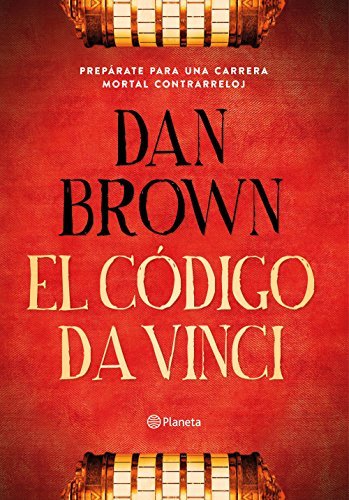
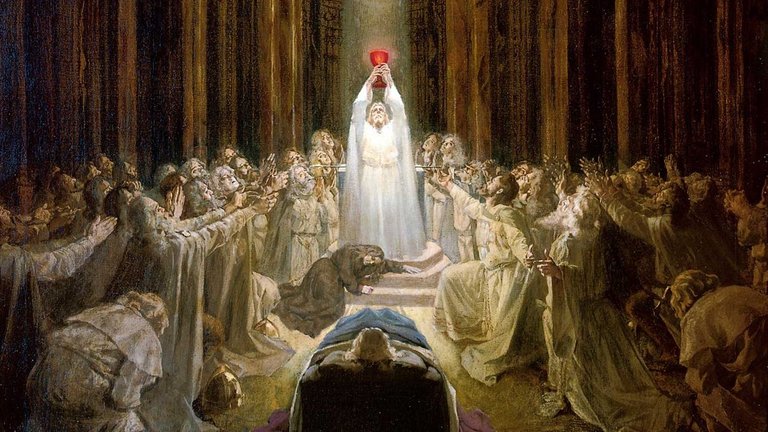
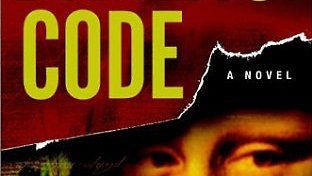

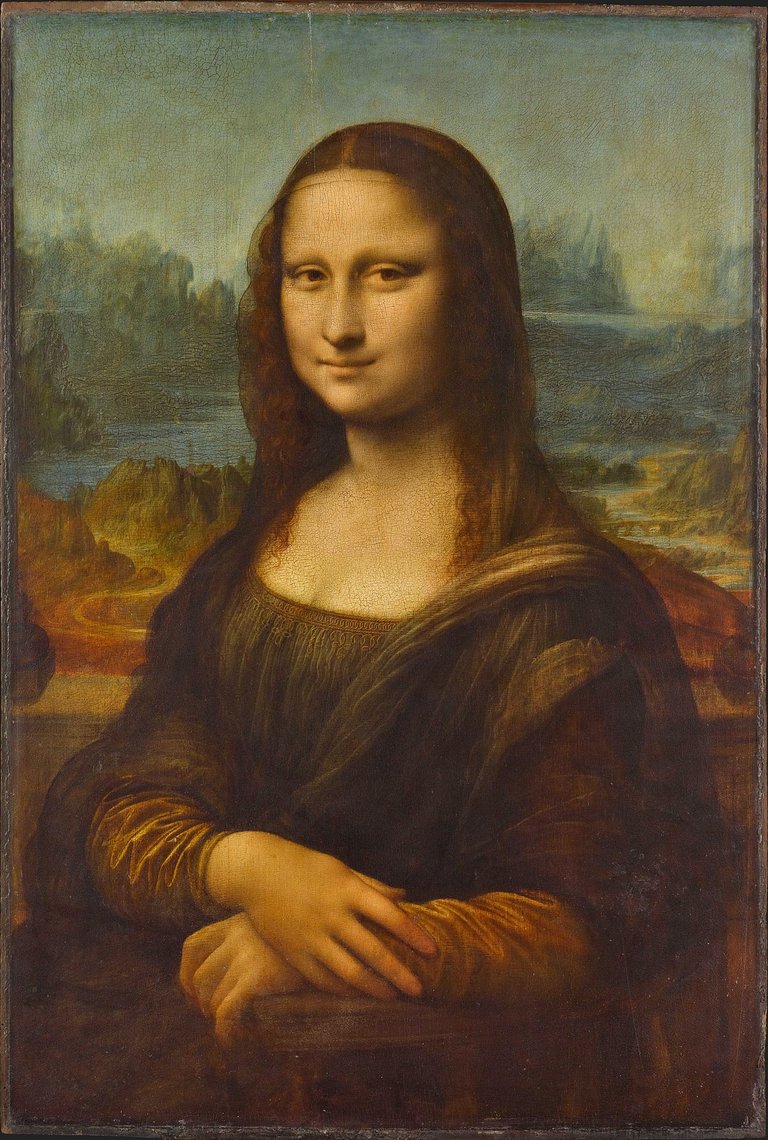
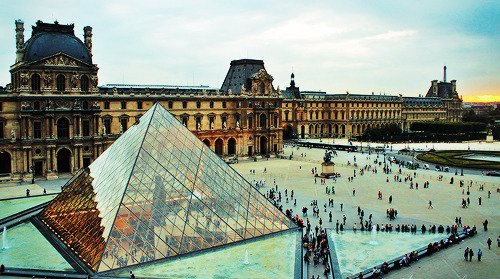


¡Un libro buenísimo! Muy informativo, así como explicativo es tu post. Me agradó leerte :)
Muchas gracias por tomarte el tiempo de leer, lo aprecio mucho😘 Saludos desde Venezuela.
Excelente resumen analítico del libro! Te felicito!
Muchas gracias por tomarse el tiempo de leer y dejar este comentario. Saludos desde Venezuela🦋
Congratulations @mariblue! You have completed the following achievement on the Hive blockchain and have been rewarded with new badge(s) :
Your next payout target is 2000 HP.
The unit is Hive Power equivalent because your rewards can be split into HP and HBD
You can view your badges on your board and compare yourself to others in the Ranking
If you no longer want to receive notifications, reply to this comment with the word
STOPSupport the HiveBuzz project. Vote for our proposal!
This made me want to watch the movie "The Da Vinci Code" again starring Tom Hanks.